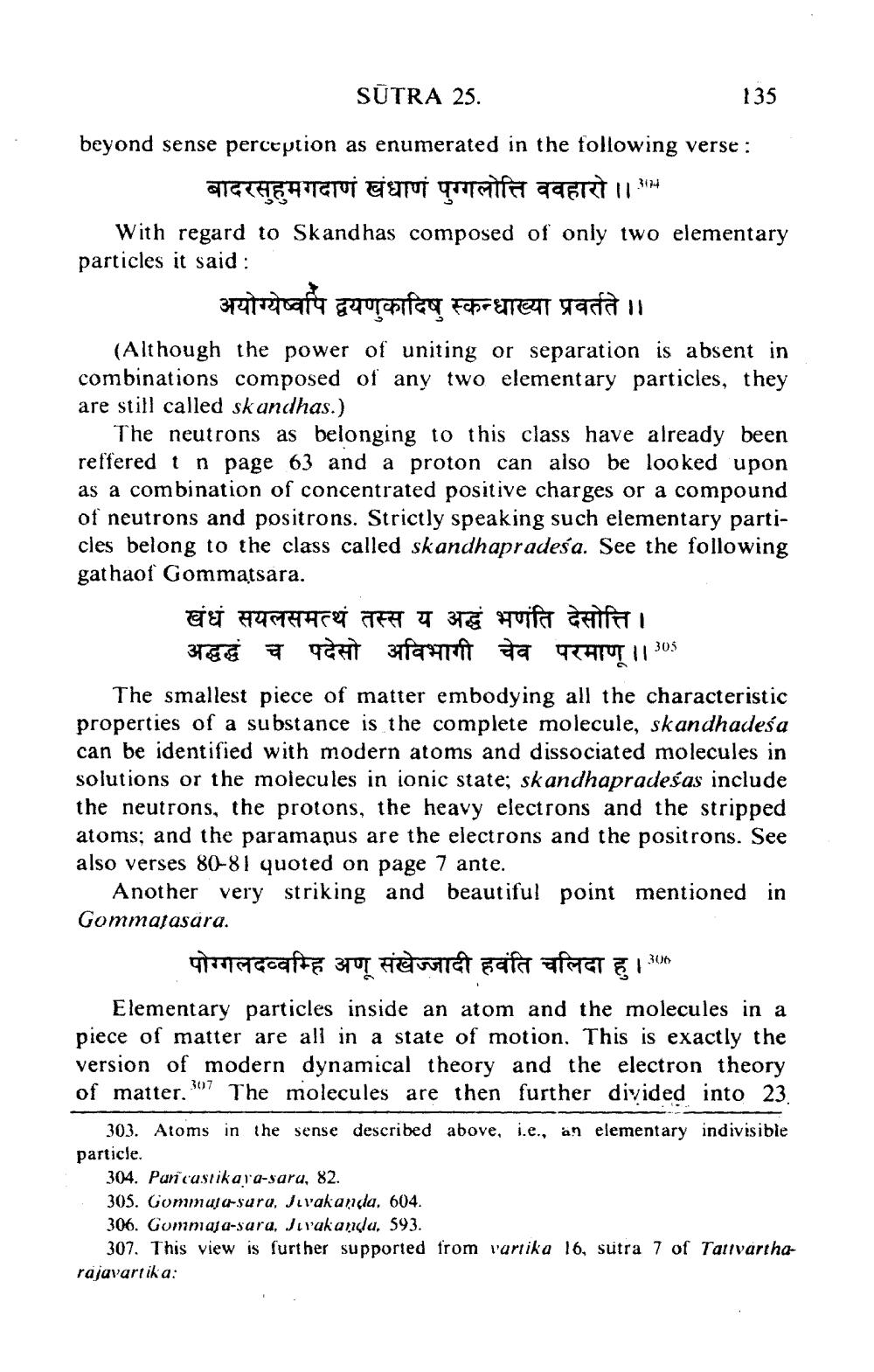________________
SÜTRA 25.
beyond sense perception as enumerated in the following verse:
3174
बादरसुहुमगदाणं खंधाणं पुग्गलोत्ति ववहारो ॥
With regard to Skandhas composed of only two elementary particles it said:
अयोग्येष्वपि द्वयणुकादिषु स्कन्धाख्या प्रवर्तते ।।
(Although the power of uniting or separation is absent in combinations composed of any two elementary particles, they are still called skandhas.)
The neutrons as belonging to this class have already been reffered tn page 63 and a proton can also be looked upon as a combination of concentrated positive charges or a compound of neutrons and positrons. Strictly speaking such elementary particles belong to the class called skandhapradesa. See the following gathaof Gommatsara.
बंधं सयलसमत्थं तस्स य अद्धं भणति देसोत्ति । अद्धद्धं च पदेसो अविभागी चेव
135
परमाणू 11
305
The smallest piece of matter embodying all the characteristic properties of a substance is the complete molecule, skandhadeśa can be identified with modern atoms and dissociated molecules in solutions or the molecules in ionic state; skandhapradesas include the neutrons, the protons, the heavy electrons and the stripped atoms; and the paramanus are the electrons and the positrons. See also verses 80-81 quoted on page 7 ante.
Another very striking and beautiful point mentioned in Gommatasära.
306
पोग्गलदव्वहि अणू संखेज्जादी हवंति चलिदा हु ।
Elementary particles inside an atom and the molecules in a piece of matter are all in a state of motion. This is exactly the version of modern dynamical theory and the electron theory of matter. The molecules are then further divided into 23.
307
303. Atoms in the sense described above, i.e., an elementary indivisible particle.
304. Parcastikaya-sara, 82.
305. Gommaja-sara, Jivakaṇda, 604.
306. Gommaja-sara, Jivakanda, 593.
307. This view is further supported from vartika 16, sutra 7 of Tattvartharajavartika:




